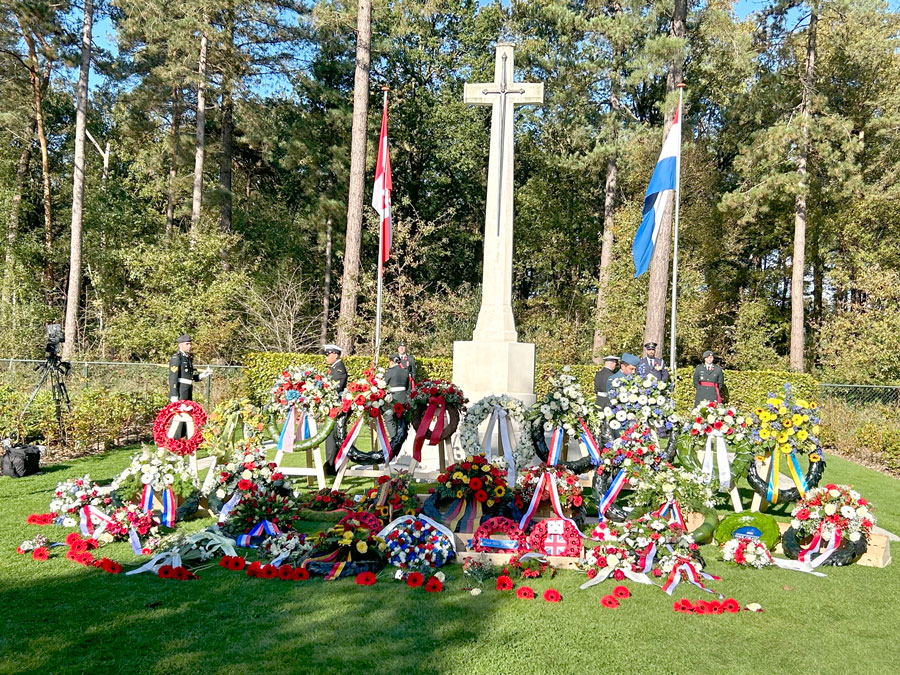By Bill Harcourt
BERGEN OP ZOOM, NETHERLANDS – Bergen op Zoom is a small city in the Netherlands, about 150km south of Amsterdam.
It’s a beautiful place, its name meaning hills on the Zoom. The city centre is medieval, walled in 1330 and given city rights in 1347.
As with most cities of this type, the main square is in the centre, and roads lead out from there. Its population is close to 70,000, and with over 800 years of history, it has over 600 historic buildings.
The square is beautiful and includes hotels, cafes, city hall a theatre for live plays and music concerts, and a towering church.
The history
The city was occupied by German forces during the Second World War and life was miserable.
When the Allies stormed the beaches in Normandy on D-Day (June 6, 1944), it set in motion the liberation of Europe and its citizens.
For the next four-plus months, Allied troops slowly made their way north, with Canadians primarily heading to the Netherlands.
In the days leading up to Oct. 27, 1944, the South Alberta Regiment and the Lincoln and Welland Regiments, both with the First Canadian Army, found themselves close to Bergen op Zoom.
They had just fought fierce battles with the Germans and suffered many casualties. They were sure the Germans had retreated, but were leery about advancing after two days of heavy fighting.
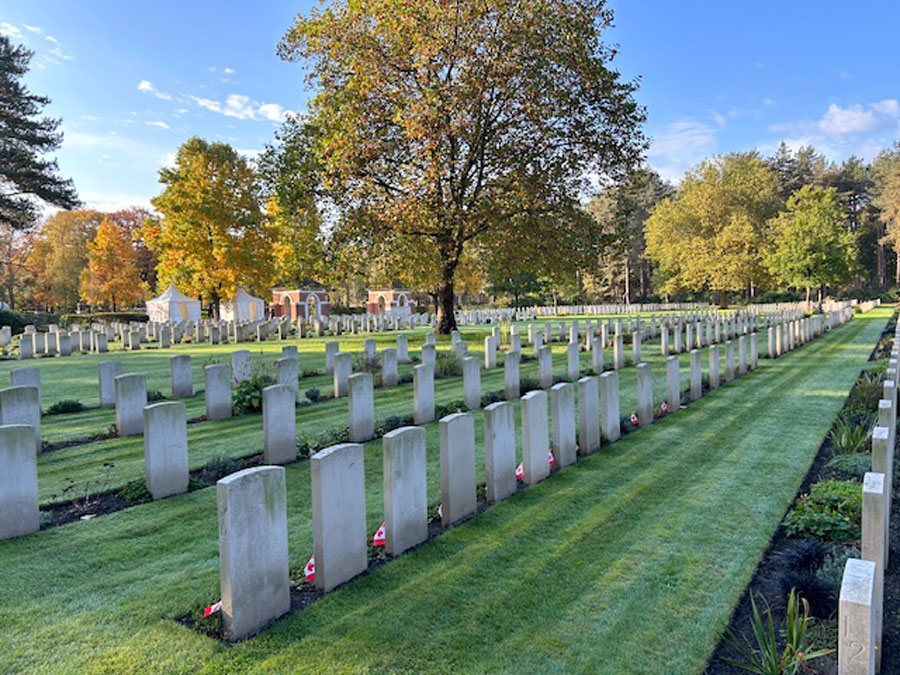
Remember them – The Bergen op Zoom Canadian War Cemetery. Submitted photo
The two Commanders were discussing what they should do next, when Lieutenant Colonel Wotherspoon of the South Alberta Regiment said, “Hell Bill, let’s take this damned place.”
A 16-year-old Kees de Waal of the Dutch Resistance said he would lead them in. They hoisted him onto the lead tank and they entered the city to a hero’s welcome.
Residents of Bergen op Zoom now celebrate their liberation on Oct. 27 every year. (The country celebrates liberation on May 5, the day the entire country was officially liberated, but different regions also celebrate on days they specifically were freed).
This year marks the 80th anniversary of Bergen op Zoom’s liberation.
My uncle, William Reginald Harcourt, was one of the many Canadian soldiers to die in the fighting two days earlier, and he is buried in the Bergen op Zoom Canadian War Cemetery, just outside the city.
He was a machinist working for the Canadian Pacific Railway before enlisting in July 1942.
He lived on Jane Street in West Toronto and attended Humbercrest School. Two of his brothers enlisted also; one was a shoemaker before infantry training, and my dad served with the First Canadian Engineers, mainly in Belgium.
William Reginald Harcourt left behind his mother, another brother and three sisters (his late father was a veteran of the 95th Battalion in the First World War).
He was 24 when he was killed.
The ceremony
My wife and I decided to make the journey to take part in the ceremonies commemorating the 80th anniversary of the liberation of Bergen op Zoom.
When we arrived, we were first taken by the beauty of this town, but also amazed that every building had a least one Canadian flag hanging from it.
They put the flags up every October, to pay homage to the brave soldiers that died while helping liberate them. Their goal is that no citizen will ever forget what happened.
Their children are taught about it from an early age, and complete projects on the soldiers buried there.
In the days leading up to Oct. 27, students staged moving theatre, where a guide would take groups of people on a tour of the path taken by the Canadians.
They tried to make it as real as possible, telling everyone to be quiet while the guide listened for the enemy.
They recreated the “Hell Bill” line, which all Dutch people seem to know.
I introduced myself to a couple of different Dutch people, and when I told them my name was Bill, they smiled and said the line. It is on a sign that shows where the Canadian and the British Cemeteries are situated. There is a “you are here” mark, and a “Hell Bill” mark.
These theatres also told the story of Canadian Sergeant Charles Kipp coming face to face with Lieutenant Carl Heinz Hulst, their rifles pointed at each other.
Neither wanted to kill the other, so they slowly lowered their weapons and turned and left.
In 1986 they both attended a WWII memorial service in Bergen op Zoom, and actually recognized each other. They embraced and after that day became good friends. They even vacationed together with their families.
The moving theatre also reenacted the aforementioned story of Kees de Waal helping the Canadians.
Wellington heroes
On Oct. 25 we went to the cemetery, 80 years to the day my uncle was killed. While there, we found and paid our respects to five Wellington County residents that were also buried in this cemetery.
We found out about them due to the incredible tribute annually displayed on the lawn of the Wellington County Museum and Archives in Aboyne.
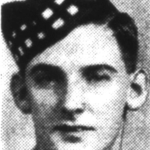
Private Earnest Cornelius Gibbs of Fergus.
Each year leading up to Remembrance Day, museum officials put out a memorial marker for every Wellington County soldier that has been killed in war.
Sadly, there are more than 550 of them. It is quite moving, especially when they light a candle at each marker and leave it lit until after Remembrance Day.
Below are some details about five heroes whose graves we visited.
Private Clarence Albert Shaw of the Royal Regiment of Canada was survived by his parents Harold Walter Shaw and Dora Lavinia of Kenilworth. He left his job as a labourer to serve his country and was killed on Oct. 28, 1944 at the age of 23.
Lieutenant John Trelawney Scudamore of Mount Forest was with the British Columbia Regiment when he was killed on Oct. 29, 1944. He was in charge of a tank crew that suffered hits in a huge day-long battle. He was 21 years old.
Nicknamed “Scud,” he was survived by his parents, Reverend Harold Burt Scudamore and May Trelawney Scudamore.
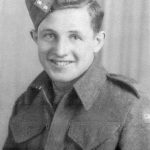
Gunner Edward James Patterson of Mount Forest.
Gunner Edward James Patterson, also from Mount Forest, was with the Royal Canadian Artillery, 19 field regiment, and was 21 when killed on Nov. 7, 1944. He was survived by his parents Harold Dufferin Patterson and Sarah Patterson of Guelph.
Lieutenant Austin Michael Heffernan of The Royal Canadian Corps of Signals, was 25 when killed by a roadside bomb on June 6, 1945. He was the son of Charles and Margaret Heffernan of Arthur.
Private Ernest Cornelius Gibbs of Fergus enlisted in October 1943 and went overseas in August 1944. He was with the Argyll and Southern Highlanders of Canada, and was 20 years old when killed on Oct. 29, 1944. He was survived by his wife, Harriet Jane Gibbs, his parents Ernest and Beatrice Gibbs of Long Branch, and a brother William and sister Viola Cole, both of Toronto.
‘Never forget’
On the evening of Oct. 25, the Royal Dutch Air Force band played a concert in the Theatre de Maagd titled Sounds of Freedom. It was a tribute to the Canadians who fought there. They played songs from the 1940s as well as some more contemporary ones.
A video played during some songs, with actual footage of the fighting, and people cheering as the Canadians came into town.
The street where the Canadians first gathered before entering the city has been renamed Canadalaan or “Canada Lane.”
Saturday morning there was a very touching service to dedicate a park on Canadalaan, renaming it South Alberta Garden.
The South Alberta honour Guard was there. A local band in period costume played hits from the 40s. Thousands of locals came out to cheer the new name.
When the Germans retreated from Bergen op Zoom, they blew up the main bridge into the town.
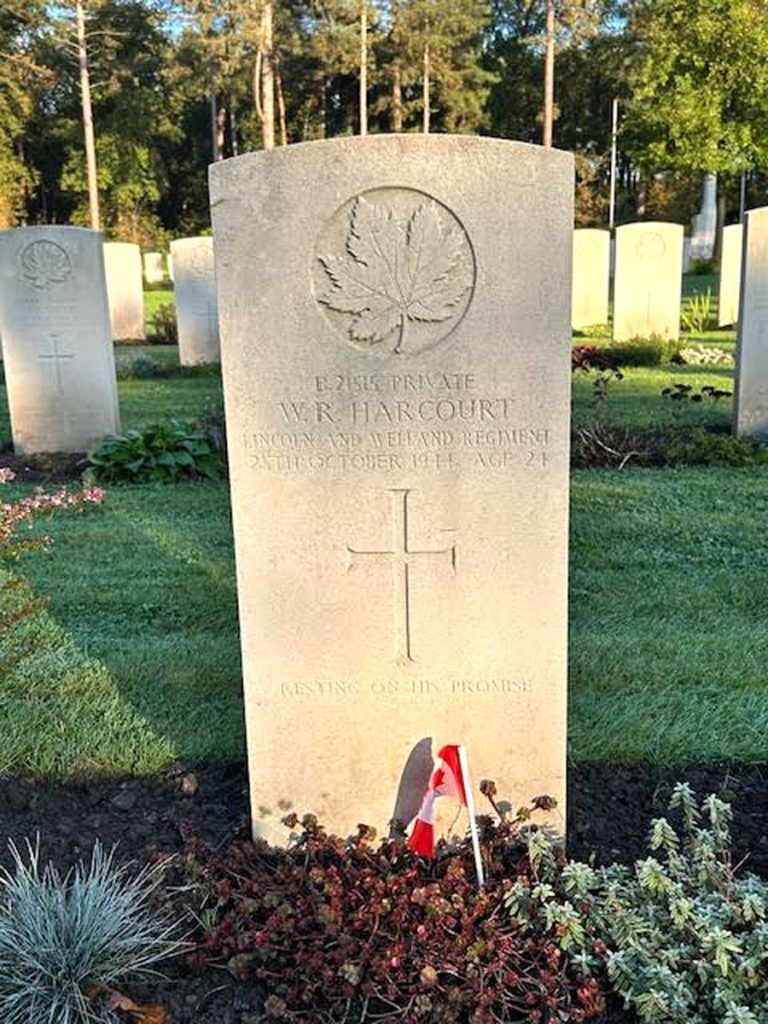
The grave marker of Private William Reginald Harcourt, who served with the Lincoln and Welland Regiment.
The Canadians quickly put up a Bailey Bridge, and when a permanent bridge was finally built, it was renamed the Lincoln Bridge, after the Lincoln and Welland Regiment.
Saturday afternoon there was a parade through the square featuring bands and WWII vehicles. Temporary bleachers were set in the square and they were full, with many more standing around the perimeter.
Saturday evening there was a Taptoe, or Tattoo, with the Lincoln and Welland Band and seven other marching bands.
They were all great and very entertaining. After the bands finished, the pubs were overflowing onto the square. It was a real street party and dance.
I spoke with many residents, and they all kept thanking me for what our soldiers did for them. It was very touching.
Sunday was the 27th, and a very sombre and moving service was held in the cemetery.
Hundreds of people attended; most rode their bicycles out from town. The Lincoln and Welland Band played the anthems of Canada and the Netherlands.
Ambassadors from a dozen countries attended and laid wreaths. Princess Margriet of the Netherlands also attended, and also laid a wreath.
The Canadian Ambassador gave a moving speech, thanking the Dutch for remembering the sacrifice of Canadians, and for their commitment to ensuring that it will never be forgotten.
The only Canadian Legion branch in the Netherlands is located in Bergen op Zoom, Branch 005. Its members served as the honour guard at the service, and also paraded the Canadian Remembrance Torch, a flame kept burning for everyone to remember the events of 1944.
Bergen op Zoom will never forget the sacrifices of Canadians, and I’ll never forget the events of this amazing week.
* * *
Bill Harcourt is a resident of Alma who travelled to the Netherlands and was in the city of Bergen op Zoom from Oct. 24 to 28.




